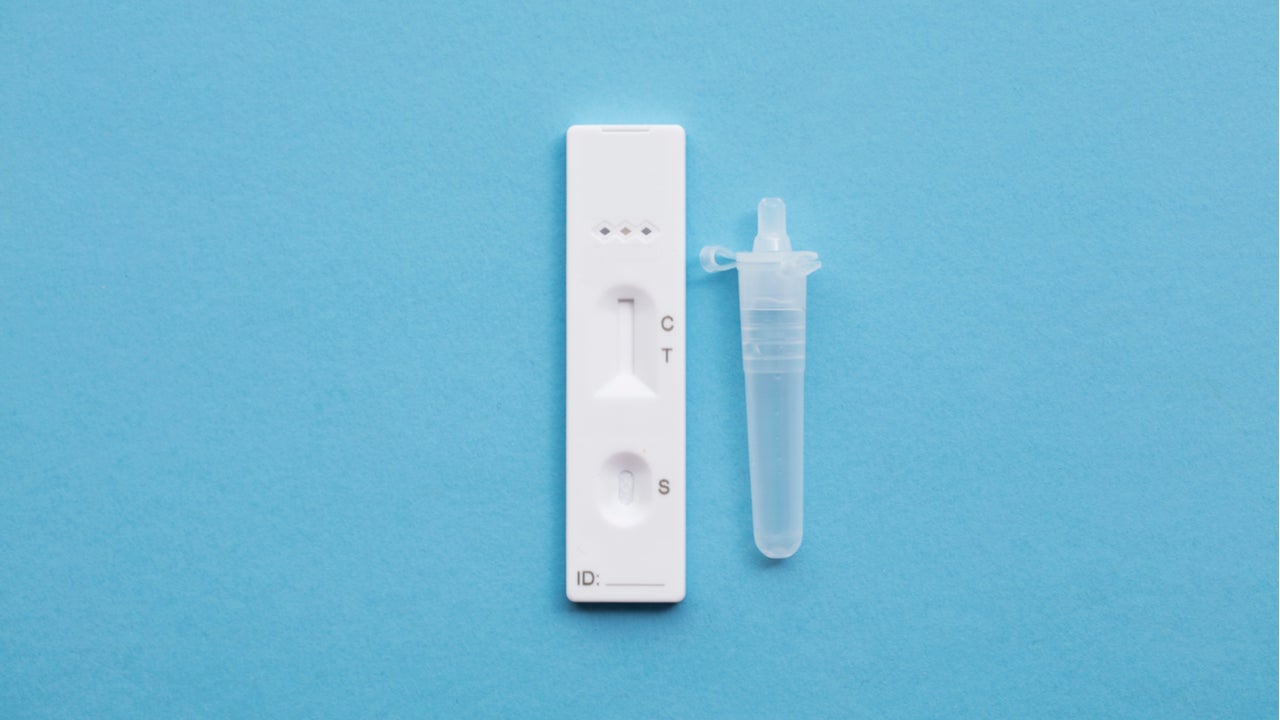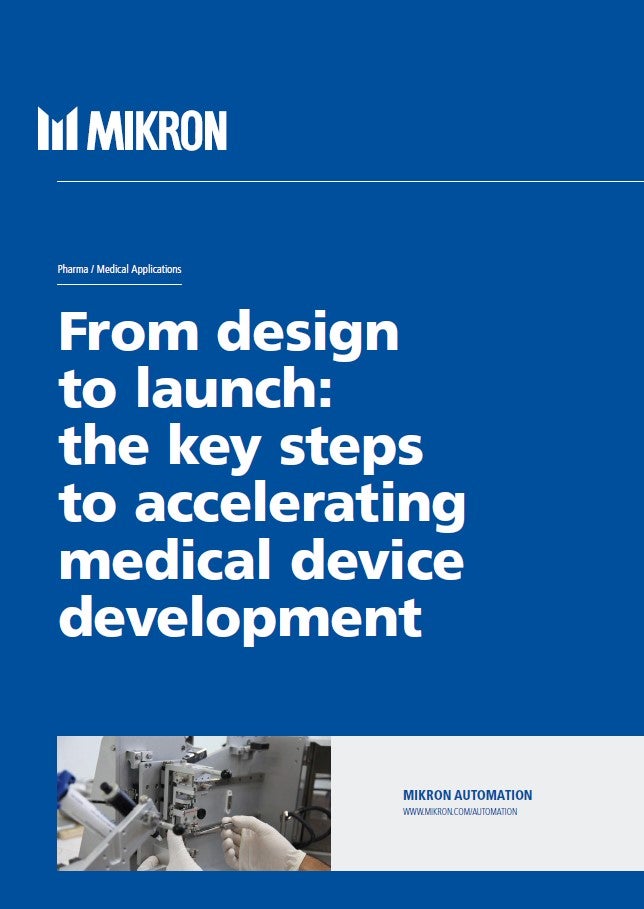
Role of Asymptomatic Lateral Flow Testing in Healthcare
Since April, the UK Government has run a campaign encouraging English citizens to take a free Covid-19 lateral flow test (LFT) twice a week. This asymptomatic lateral flow testing, the government says, should help identify the one in three cases of Covid-19 where no symptoms are present and minimise the spread of disease.
Many schools and workplaces have made twice-weekly LFT usage compulsory for students and employees, and some community spaces, nursing homes and hospitals require visitors to use them before admission.
Last week, the Department of Health and Social Care (DHSC) said that the practice of asymptomatic testing had been validated in three newly-published studies analysing the Innova LFTs used in the UK in a number of different scenarios.
These included: against variants of concern; on patients with high or low viral loads; as part of mass testing campaigns; in the hands of inexperienced users; and with different types of swabs.
Some researchers have now questioned the government’s messaging. In a BMJ editorial, Newcastle University professor of public health Allyson Pollock and Population Health Sciences Institute principal research associate Peter Roderick described the data available as “very limited”.
How well do you really know your competitors?
Access the most comprehensive Company Profiles on the market, powered by GlobalData. Save hours of research. Gain competitive edge.

Thank you!
Your download email will arrive shortly
Not ready to buy yet? Download a free sample
We are confident about the unique quality of our Company Profiles. However, we want you to make the most beneficial decision for your business, so we offer a free sample that you can download by submitting the below form
By GlobalDataPollok and Roderick also state that there is a lack of evidence to support the use of LFTs as “green light” tests to enable activities and that the best-case scenario for the tests would be to use them to rapidly detect infection in a healthcare setting.
UK ministers and some leading scientists have taken the line that LFTs can help pick up Covid-19 cases in people who don’t realise they have it, prompting them to self-isolate and preventing further disease spread.
However, critics say that the devices’ apparent propensity for false-negative results will lead to infected people incorrectly assuming they are virus-free, potentially spreading the disease to others in the community.
The studies in question
The first study assessed the ability of the LFTs to detect the Delta and Alpha variants and found no change in the sensitivity of the tests when identifying either variant, results which scientists had largely been expecting already.
A second study analysed the efficacy of LFTs under different testing conditions and varying patient viral loads by comparing a number of different LFT user evaluation studies, mostly of the Innova test.
It found that for people with high sample viral loads above 1,000,000 copies per ml, LFTs were 96% effective, dropping slightly to 92% effective for individuals with a viral load between 10,000 – 1,000,000 copies per ml. However, for those with viral loads under 10,000 copies per mil, sensitivity dropped to only 43%.
The third study the DHSC cited was the full evaluation of the Liverpool COVID-SMART community testing pilot for people without symptoms. The pilot, which ran from 6-29 November 2020, saw the Innova SARS-CoV-2 antigen rapid lateral flow test offered to around 125,000 residents attending asymptomatic testing sites.
A subset of 5,869 participants also provided samples for confirmatory polymerase chain reaction (PCR) tests.
The report estimates that the trial increased case detection by 18% compared to control areas. The report also estimates that it led to a 21% reduction in cases until mid-December 2020, after which the Alpha variant surge made comparison difficult.
However, despite being cited by the government as evidence in favour of routine asymptomatic testing, the Liverpool study ultimately confirmed the low sensitivity of the tests in a mass asymptomatic screening setting.
Final data shows that while the test had an exceptionally high specificity of 99.94%, meaning false-positive rates were very low, the overall sensitivity was only 40%, meaning only four in ten of the 74 participants who tested positive by PCR would test positive using an LFT.
The results of this study have been published just a month after the test was subject to a Class I recall in the US, with the Food and Drug Administration (FDA) advising citizens to “destroy the tests by placing them in the trash”.
The FDA said: “Labelling distributed with certain configurations of the test includes performance claims that did not accurately reflect the performance estimates observed during the clinical studies of the tests. The performance characteristics of the test have not been adequately established, presenting a risk of false results.”
Why Innova?
The DHSC has entered into eight different contracts with Innova Medical Group to acquire its LFTs, valued at £3.2bn as of May 2021. Innova is owned by Pasaca Capital, a California-based private equity firm, and is reportedly setting up a manufacturing plant in Wales. The tests it supplies are currently manufactured by Xiamen Biotime Biotechnology in Fujian, China.
Last month, the UK Medicines and Healthcare products Regulatory Agency (MHRA) announced that it had extended its exceptional use authorisation (EUA) for the Innova tests for just over two months. The original six-month authorisation expired on 22 June but will now run until 28 August.
The MHRA conducted a review into the Innova tests following the US recall but reached a “satisfactory outcome” allowing the authorisation to be extended.
In their BMJ editorial, Pollock and Roderick said: “It is not known… what this review consisted of, what evidence the MHRA has as to whether the conditions of the original authorisation have been complied with and which justified the extension, why the extension is only for two months, and what the terms of the extended authorisation are. This is because the MHRA has refused to disclose this information, despite freedom of information requests.”
MHRA director of devices Graeme Tunbridge told Medical Device Network: “Our priority is to ensure patients and the public have access to safe and effective medical devices and tests. Following our normal process to investigate any product concern, the MHRA immediately began reviewing all available information. A full risk assessment was undertaken by DHSC as legal manufacturer of the LFTs in the UK and the MHRA has undertaken a thorough review to ensure that we were satisfied with the assessment and any action proposed.
“We have now concluded our review of the risk assessment and are satisfied that no further action is necessary or advisable at this time. This has allowed us to extend the EUA to allow ongoing supply of these LFDs over the coming months. People can be assured of the MHRA’s work to continuously monitor the tests in use; as is our normal process.”
The MHRA also told Medical Device Network that the duration of an EUA can differ for a number of reasons and in this instance, a shorter extension was considered appropriate. This does not preclude the EUA from potential further extensions if requested.
Some have speculated that the ongoing promotion of asymptomatic LFT use by the UK Government has less to do with public health and more to do with former Chief Adviser to the Prime Minister Dominic Cummings’ desire to “get ahead of the science”, as well as fulfilling contractual obligations to Innova.
In January, a government source told the Guardian that they felt: “Downing Street wanted to spend massively on the population-wide testing scheme and was not worried if the experiment failed.”
How much do asymptomatic cases contribute to transmission?
Many of the scientists who oppose the routine asymptomatic use of LFTs do so not just because of their low sensitivity, but due to the fact that the contribution of asymptomatic Covid-19 cases to overall disease spread appears to be minimal.
Pollock told Medical Device Network: ““There is clear evidence for asymptomatic transmission but with truly asymptomatic people, as opposed to those who are in the early stages of infection and later develop symptoms, it looks as though they are less infectious because they may be carrying or excreting less viral load.
“The transmission rates to contacts within a specific group (secondary attack rate) may be three to 25 times lower for people who are asymptomatic than for those with symptoms”
Mounting evidence that Covid-19 spreads primarily from people with symptoms means that dedicating resources to rooting out these less infectious asymptomatic cases may be a misguided use of time and money.
People who have Covid-19 are known to be infectious in the pre-symptomatic stage of the disease, when they’re already infected but symptoms have yet to develop.
However, trying to track these cases down may also be more trouble than it’s worth, as public health consultant Angela Raffle previously told Medical Device Network: “The pre-symptomatic phase when people are infectious is very hard to find with screening because it is short – which is why focusing on contacts of known cases is more likely to be beneficial.”
It’s also unclear exactly how many people with Covid-19 are truly asymptomatic. The UK Government continues to cite a one-in-three statistic using a source from May 2020 and a study published in the Annals of Internal Medicine in January resulted in similar findings, but other research has put this estimate between 17% – 20%.
Not all LFTs
None of this is to say that LFTs, across the board, are not a useful tool – but they need to be administered correctly.
In a recent study, 2,500 people in Austria with mild to moderate flu-like symptoms were assessed for viral antigen using an LFT and those suspected to have Covid-19 were also examined using a PCR. The LFT detected more than 95% of the cases found by PCR and correctly identified 89% of cases as negative.
Study author Dr Werner Leber from Queen Mary University of London said: “Previous studies have suggested lateral flow tests may be less sensitive than PCR in detecting Covid-19, particularly among asymptomatic individuals and during the early or late stage of an infection when the viral load is lowest. But we have found that in patients who are newly symptomatic, the two testing methods have similar levels of accuracy.
“Countries are considering using lateral flow tests to manage future waves of the pandemic. Our findings support this move, but ensuring tests are properly administered should be integral to any strategy.”
A small study carried out by the US National Institutes of Health (NIS) also found that the Quidel Sofia SARS Antigen Fluorescent Immunoassay LFT could be just as effective as PCR tests in detecting Covid-19 when used for serial screening conducted every three days. This study enrolled participants who either tested positive themselves or lived in close contact with a person who received a positive result.
LFTs have a clear advantage over PCRs in providing a Covid-19 diagnosis to symptomatic people. Where PCRs must be sent away to a lab to diagnose disease, meaning patients may need to wait several days for their test results, LFTs can provide a positive or negative result within 15 to 30 minutes, depending on the brand.
However, while numerous LFT brands have demonstrated their high sensitivity among symptomatic patient cohorts, they appear to repeatedly fall short of the mark in screening asymptomatic people.





